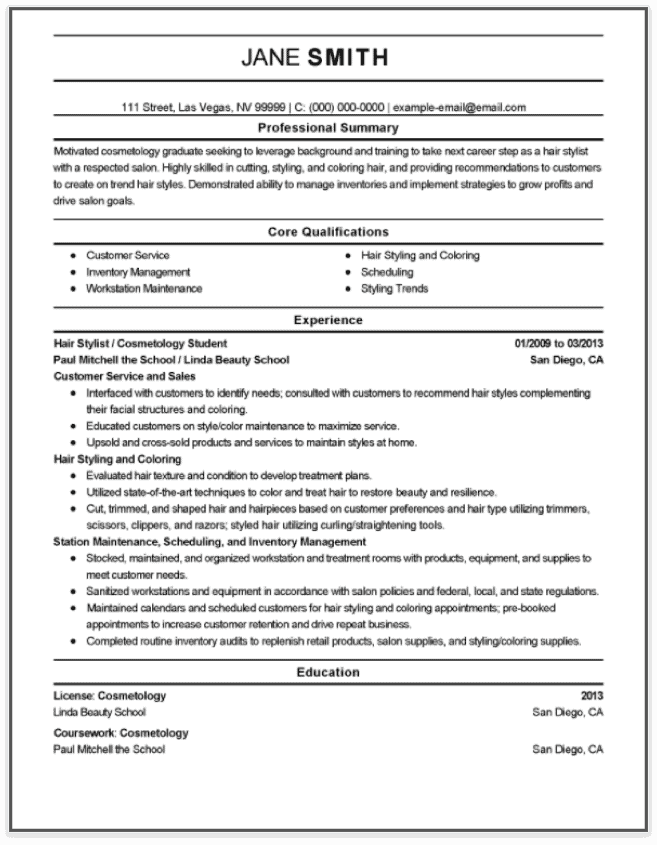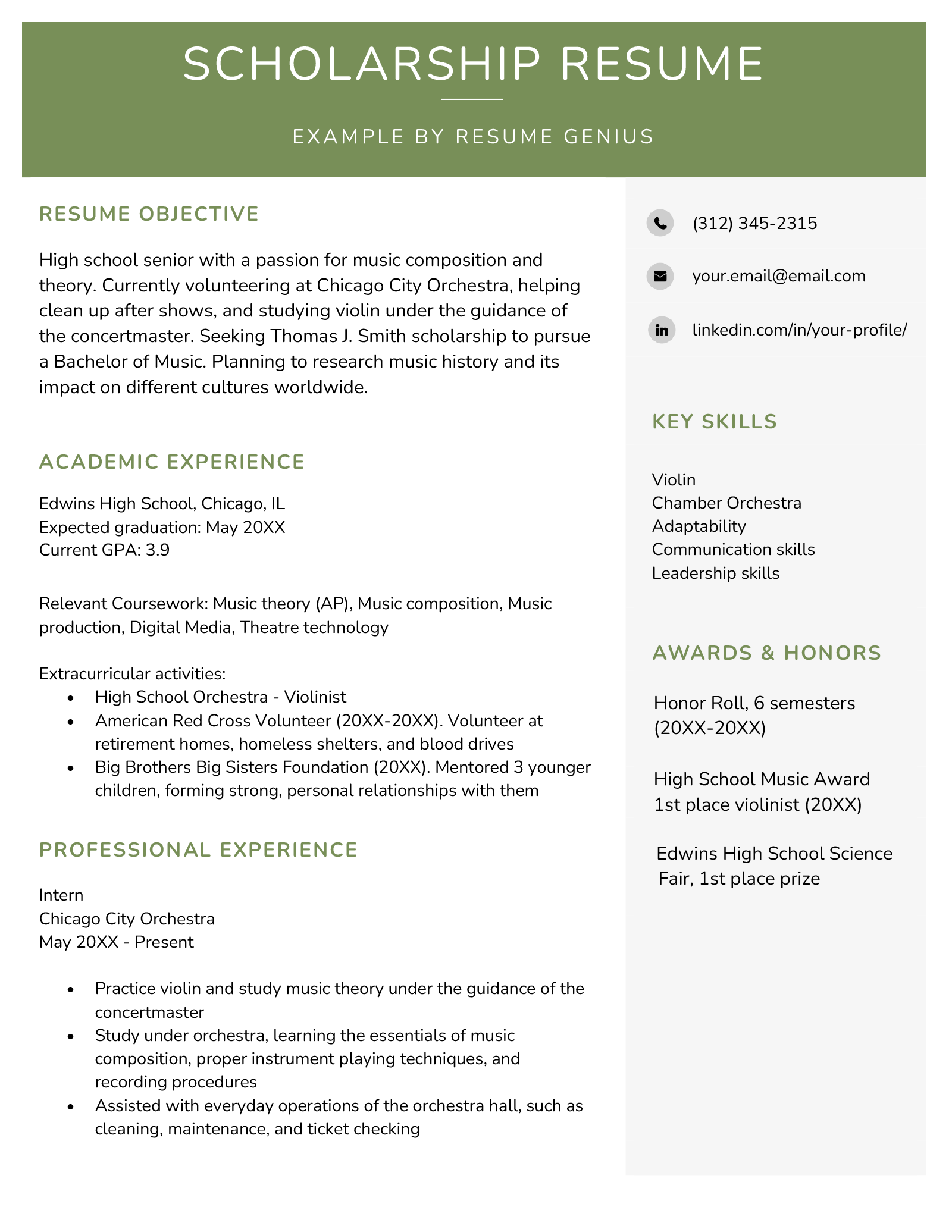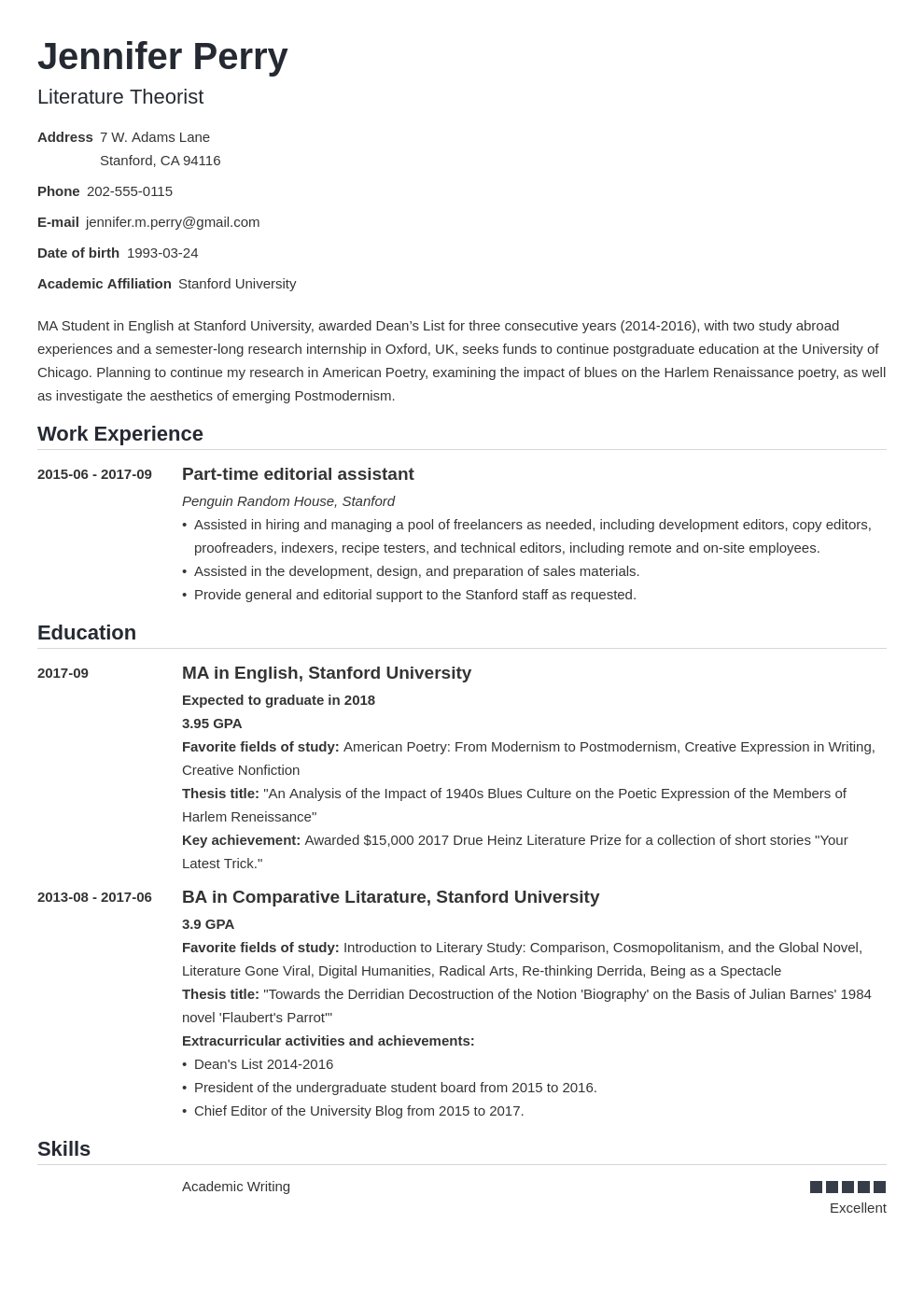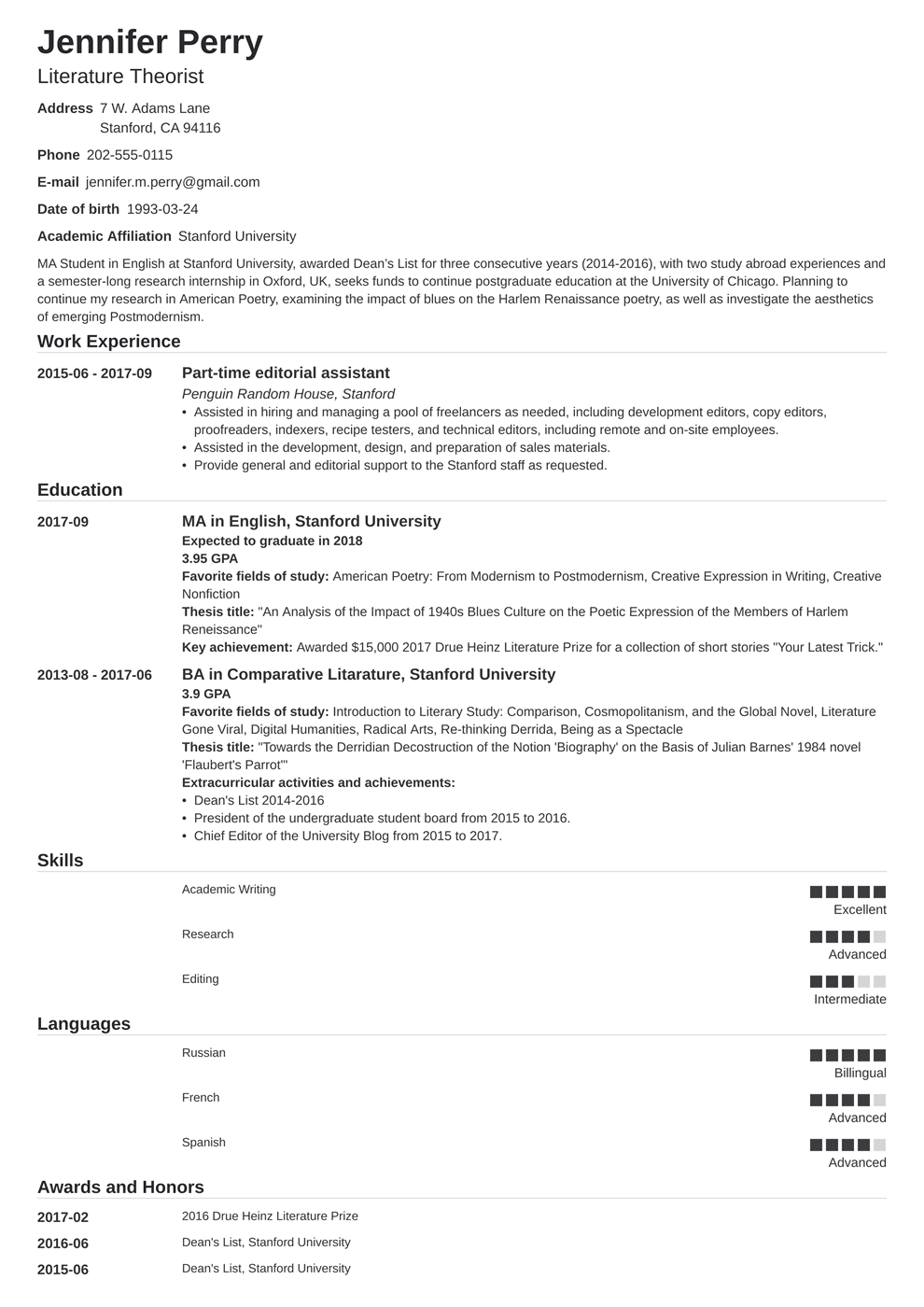What to Include in Your Scholarship CV for Maximum Impact

Crafting a scholarship CV isn't just about listing accomplishments; it's about strategically showcasing your strengths and aligning them with the scholarship's specific criteria. This document is often your first impression, a key differentiator in a sea of applications. Therefore, every element must contribute to a compelling narrative, highlighting your potential and suitability. Knowing what to include, how to format it effectively, and which details to emphasize can dramatically increase your chances of success. This guide unveils the critical components to incorporate, ensuring your scholarship CV makes a maximum impact and captures the attention of the selection committee.
Crafting a Compelling Scholarship CV: Key Elements for Success
A scholarship CV, unlike a traditional resume, needs to showcase your academic achievements, extracurricular involvement, skills, and character in a way that aligns with the scholarship's specific goals and values. It's a narrative demonstrating why you're the ideal candidate for their investment. This means going beyond just listing accomplishments and instead painting a picture of your potential and how the scholarship will help you achieve it. Tailor your CV to each scholarship, highlighting the experiences and skills most relevant to their mission. Remember, clarity, conciseness, and compelling storytelling are key to making a lasting impression.
Academic Excellence and Relevant Coursework
Highlight your GPA, class rank (if applicable), and any academic awards or honors you've received. Specifically mention coursework that directly relates to the scholarship's field of study or its broader goals. For instance, if you're applying for a STEM scholarship, emphasize your proficiency in math and science courses and any related projects you've undertaken. Don't just list courses; briefly explain how the knowledge gained from these courses contributes to your overall goals and makes you a suitable candidate.
Meaningful Extracurricular Activities and Leadership Roles
Beyond academics, scholarships seek well-rounded individuals. Focus on extracurricular activities that demonstrate leadership, teamwork, commitment, and a passion for something beyond the classroom. Briefly describe your role and responsibilities in each activity, emphasizing the impact you made and the skills you developed. Avoid simply listing activities; instead, use action verbs and quantify your contributions whenever possible to showcase the tangible results of your involvement.
Skills and Abilities Tailored to the Scholarship
Identify the skills and abilities most valued by the scholarship provider and highlight those that align with your own strengths. This could include technical skills, soft skills, language proficiency, or any other competencies relevant to the field of study or the scholarship's goals. Provide concrete examples of how you've utilized these skills in academic projects, extracurricular activities, or volunteer work to demonstrate your proficiency.
Volunteer Experience and Community Involvement
Showcase your commitment to community service and your desire to make a positive impact on the world. Describe your volunteer experiences, highlighting the organizations you've worked with, the tasks you performed, and the difference you made in the lives of others. Focus on experiences that align with the scholarship's values and demonstrate your empathy, compassion, and dedication to serving others.
Awards, Honors, and Recognition
In addition to academic awards, include any other awards, honors, or recognitions you've received for your achievements in extracurricular activities, volunteer work, or other areas of interest. These accolades serve as validation of your skills, talents, and contributions. Be sure to briefly describe the significance of each award and the criteria for receiving it.
| Section | Example Content | Key Emphasis |
|---|---|---|
| Academic Excellence | GPA: 3.9/4.0, Dean's List, AP Scholar with Distinction | Outstanding academic performance and relevant coursework. |
| Extracurricular Activities | President of Debate Club, Volunteer at Local Shelter | Leadership skills, teamwork abilities, and commitment to causes. |
| Skills and Abilities | Proficient in Python, Fluent in Spanish, Excellent Communication Skills | Relevant skills to the scholarship's field of study. |
| Volunteer Experience | Tutored underprivileged students, Organized community cleanup events | Dedication to community service and making a positive impact. |
| Awards and Recognition | National Merit Scholar, Volunteer of the Year Award | Validation of skills, talents, and contributions. |
How to write a good CV for a scholarship?

1. Structuring Your CV for Maximum Impact
The structure of your scholarship CV is crucial for grabbing the reader's attention. Start with a concise personal statement or objective that clearly outlines your academic goals and aspirations. Follow this with sections on education, research experience, work experience (if relevant), extracurricular activities, skills, and awards/honors. Each section should be organized chronologically, starting with the most recent experiences. Use clear headings and subheadings to improve readability. Prioritize the most relevant information at the top of each section. Ensure all information is accurate and error-free. A clean and professional layout is a must.
- Prioritize academic achievements early in the CV.
- Use action verbs to describe your responsibilities and accomplishments.
- Keep it concise; aim for 1-2 pages maximum.
2. Highlighting Academic Achievements and Research Experience
Academic achievements are the cornerstone of a scholarship CV. Clearly state your GPA, relevant coursework, and any academic awards or honors. If you have research experience, describe your role in the project, the methodologies used, and the key findings. Even if your research experience is limited, highlight any relevant skills or knowledge you gained. If you have publications or presentations, be sure to include them. Quantify your achievements whenever possible. For example, instead of saying you "improved efficiency," say you "improved efficiency by 15%."
- List your GPA and relevant coursework prominently.
- Describe your research contributions with specific details.
- Include publications, presentations, and posters if applicable.
3. Showcasing Extracurricular Activities and Leadership Skills
Scholarship committees are looking for well-rounded individuals with leadership potential. Use your CV to showcase your extracurricular activities, volunteer work, and leadership roles. Describe your involvement in each activity and highlight any significant contributions you made. Focus on activities that demonstrate your commitment to your field, your leadership skills, and your ability to work in a team. Even seemingly unrelated activities can be valuable if you can demonstrate how they have helped you develop relevant skills. For example, participation in a sports team can demonstrate teamwork and leadership.
- Highlight leadership roles and responsibilities.
- Connect extracurricular activities to your academic goals.
- Showcase teamwork and communication skills.
4. Tailoring Your CV to the Specific Scholarship
It is crucial to tailor your CV to each scholarship for which you are applying. Carefully review the scholarship's requirements and selection criteria and identify the skills and qualities they are seeking. Then, tailor your CV to emphasize the aspects of your experience that are most relevant. For example, if the scholarship is focused on environmental science, highlight any research experience, coursework, or extracurricular activities related to environmental issues. Be sure to use keywords from the scholarship description in your CV. Generic CVs are easily spotted and rarely successful.
- Research the scholarship's mission and values.
- Align your CV with the scholarship's requirements.
- Use keywords from the scholarship description.
5. Proofreading and Formatting for a Professional Presentation
A polished and professional CV is essential for making a good impression. Proofread your CV carefully for any errors in grammar, spelling, or punctuation. Ask a friend or mentor to review your CV as well. Use a clean and consistent format with clear headings and subheadings. Choose a professional font and use appropriate margins. Ensure that your CV is easy to read and navigate. A well-formatted CV demonstrates attention to detail and professionalism, which are important qualities for a scholarship applicant.
- Proofread carefully for errors.
- Use a clean and consistent format.
- Choose a professional font and layout.
What is a good objective for a scholarship resume?

Demonstrating Alignment with Scholarship Goals
A key aspect of a good objective is showing how your aspirations and the scholarship's goals align. You should research the scholarship provider's mission and values and then articulate how receiving the scholarship will enable you to contribute to their objectives. Tailoring your objective statement to reflect this alignment will significantly increase your chances of standing out.
- Show that you have researched the scholarship provider.
- Align your goals with the organization's mission.
- Demonstrate that you understand the organization's vision.
Highlighting Relevant Skills and Experiences
Your objective should briefly showcase skills and experiences that make you a strong candidate for the scholarship. This can include academic achievements, leadership roles, volunteer work, or any other relevant accomplishments. The focus should be on qualities that demonstrate your commitment and potential for success.
- Mention academic achievements and extracurriculars.
- Highlight skills that demonstrate your potential.
- Showcase leadership roles or volunteer experiences.
Expressing Academic and Career Aspirations
A compelling objective clearly articulates your academic and career goals. This demonstrates ambition and a sense of direction, which are traits that scholarship providers often seek. This helps the reviewer to easily see that the scholarship funding will not be wasted.
- Mention your intended major and future career path.
- Demonstrate ambition and a sense of direction.
- Explain how the scholarship will help you achieve goals.
Showcasing the Impact of the Scholarship
Your objective should clearly articulate how the scholarship would enable you to pursue your educational aspirations without financial constraints. It allows you to focus on academics, research, and community engagement, further enhancing your potential for success.
- Mention how the scholarship will alleviate financial burden.
- Explain how you can focus on your studies.
- Highlight how the scholarship will allow you to reach your full potential.
Maintaining Conciseness and Clarity
An effective objective statement is short, direct, and easy to understand. Avoid using jargon or overly complicated language. Clarity is key.
- Keep it short and to the point.
- Avoid using complicated language.
- Focus on clarity and impact.
How do you put a full scholarship on a resume?

Where to List Your Scholarship
The most common and logical place to showcase your full scholarship is within the "Education" section of your resume. This section is dedicated to your academic accomplishments, making it a natural fit for highlighting awards and recognitions. Placing it here ensures that potential employers immediately recognize your academic excellence and the prestigious nature of your scholarship.
- List the scholarship under the corresponding degree to provide context.
- Make sure your "Education" section is clearly labeled and organized.
- If the scholarship is particularly prestigious, you might consider mentioning it in your resume summary or as an achievement, depending on its relevance to the role.
Formatting Your Scholarship Entry
When formatting your scholarship entry, clarity and conciseness are key. Be sure to include the full name of the scholarship, the awarding organization (if applicable), and the reason for the award (e.g., academic merit, leadership qualities, etc.). Using consistent formatting throughout your resume will ensure readability and professionalism. Always emphasize the criteria for receiving the scholarship as it showcases what makes you a potential strong hire.
- Use italics or bolding to emphasize the name of the scholarship.
- Provide a brief description of the scholarship's criteria, such as "Awarded for Academic Excellence."
- Include the dates you received the scholarship if it was awarded annually.
Highlighting the Value of the Scholarship
Don't just list the name of the scholarship; emphasize its value and impact. Quantify the scholarship if possible (e.g., "Full tuition coverage," "Annual stipend of $X"). Frame the scholarship in a way that highlights your accomplishments and the recognition you received. Showcasing the significance of the scholarship demonstrates to employers that you are a high-achiever and a valuable asset.
- Mention if the scholarship covered full tuition, room and board, or other expenses.
- If the scholarship involved a competitive application process, highlight this aspect.
- Consider briefly mentioning any special opportunities or benefits associated with the scholarship, such as mentorship programs or research grants.
Tailoring to the Job Description
As with all aspects of your resume, tailor your scholarship entry to the specific job description. If the scholarship was awarded based on skills or experiences directly relevant to the position, be sure to emphasize those connections. Customize your resume to highlight your achievements and how they align with the employer's needs.
- Review the job description carefully to identify relevant skills and qualifications.
- In your scholarship description, emphasize the criteria that align with the job requirements.
- If the scholarship involved projects or activities directly related to the job, highlight those experiences in your work experience or project sections.
When to Include/Exclude the Scholarship
While a full scholarship is generally a valuable addition to your resume, there are certain situations where it might be more appropriate to exclude it. If you have extensive work experience directly relevant to the job, and your resume is already lengthy, you might consider prioritizing your professional achievements. However, if you are a recent graduate or have limited work experience, highlighting your academic achievements is particularly important. Evaluate the relevance of the scholarship to the job description and the overall strength of your resume when deciding whether to include it.
- Consider excluding the scholarship if your resume is already very long and you have substantial relevant work experience.
- If the scholarship is very old (e.g., from high school) and you have more recent and relevant accomplishments, it might be less important to include.
- If the scholarship isn't relevant to the job you're applying for, consider prioritizing more relevant information.
Frequently asked questions
What are the key sections I should include in my scholarship CV?
Your scholarship CV should prominently feature sections that showcase your academic achievements, including your GPA, relevant coursework, and any academic honors or awards you have received. Additionally, highlighting your extracurricular activities, leadership roles, volunteer experience, and skills that align with the scholarship's criteria is crucial. Remember to tailor the CV to each specific scholarship for maximum impact.
How can I highlight my achievements and experiences effectively?
Quantify your achievements whenever possible. Instead of simply stating you "led a team," mention "Led a team of 10 volunteers, increasing fundraising efforts by 20%." Use action verbs to describe your responsibilities and accomplishments, and provide concrete examples that demonstrate your skills and impact. Prioritize the information that is most relevant to the scholarship's goals and values.
Should I include a personal statement or objective in my scholarship CV?
While a full personal statement is usually reserved for a separate essay, including a brief objective statement at the beginning of your CV can be beneficial. This statement should concisely summarize your career aspirations and how the scholarship will help you achieve them. However, ensure the objective is tailored to the specific scholarship and highlights your alignment with its mission.
What formatting and presentation tips should I follow for a scholarship CV?
Maintain a clean and professional layout using a clear font and consistent formatting throughout. Use bullet points to present information in an organized and easy-to-read manner. Proofread meticulously for any grammatical errors or typos, as these can significantly detract from your credibility. Aim for a CV that is concise, well-organized, and visually appealing.
